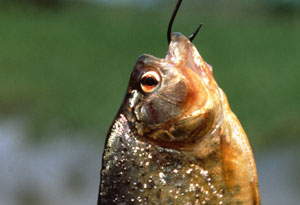How to Choose Healthy, Eco-Friendly Seafood

Photo: Thinkstock
There may be plenty of fish in the sea, but finding one for dinner can make your head swim. Feel like salmon? U.S. tank-farmed freshwater coho salmon is environmentally sound, while Atlantic farmed varieties usually aren't. Wild-caught Alaskan varieties get great marks, but you can't trust that salmon simply marked "wild" truly is. Here's how to navigate.
1. Download a Monterey Bay Aquarium Seafood Watch pocket guide for best picks, fish to avoid, and good alternatives. Go to Mobile.SeafoodWatch.org for apps. 2. Text the word FISH and a species name to 30644; the Blue Ocean Institute will send a sustainability rating and better options.
3. Look for the Marine Stewardship Council label on wild-caught fish in stores and restaurants—it's the most rigorous certification there is.
Avoid These:
- Chilean sea bass (overfished)
- Orange roughy (overfished)
- Bluefin tuna (overfished, high mercury levels)
- Most farmed, imported shrimp (environmentally irresponsible farming)
- Most open-net farmed salmon (environmentally irresponsible farming)
Choose these:
- Tilapia, Central American farmed (Low in mercury and other contaminants, environmentally responsible farming)
- Catfish, U.S. farmed (Low in mercury and other contaminants, environmentally responsible farming)
- Rainbow trout, U.S. farmed (Low in mercury and other contaminants, environmentally responsible farming)
- Crab: Dungeness, stone, or kona (Low in mercury and other contaminants, sustainable fishery)
- Mussels (Low in mercury and other contaminants, environmentally responsible farming)
- Bay scallops, China farmed (Low in mercury and other contaminants, environmentally responsible farming)
- Fish caught with hook and line, traps, pots, or harpoon (Environmentally responsible farming)
Next: Got that? Here's what you need to know about buying meat
As a reminder, always consult your doctor for medical advice and treatment before starting any program.



